Drug
 From Nwe
From Nwe 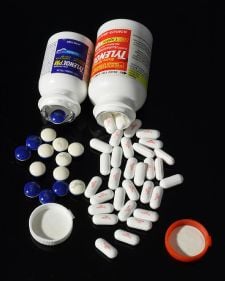
Drug, broadly defined, is a term used for any chemical substance that when introduced to the body of a living organism has a non-food impact in altering the organism's normal functioning or structure.
The term drug lacks a precise definition and may used in different senses in medicine, pharmacology, government regulation, and common usage. The term may have a positive connotation as a chemical compound used medically in humans or animals for diagnosis, treatment, cure, mitigation, or prevention of disease, pain, or other abnormal condition. It also may have a negative connotation as a substance that affects the body or mind of humans in such a way that it implies impairment, abuse, addiction, or illegal use. Some drugs are used to create or enhance recreational experience (recreational drugs) and some are used in religious, shamanic, or spiritual contexts (entheogens).
Many chemical agents known as drugs are used both medically and for non-therapeutic purposes, such as anabolic steroids used in treatment of cancer or recovery from surgery, as well as used (generally illegally) to gain a competitive advantage by enhancing athletic performance. Morphine may be used medically as an analgesic but also is highly addictive, with among the highest abuse and dependency potential of all known drugs. Among drugs with common, often legal non-medical use as recreational drugs are alcohol, caffeine, and tobacco. Common drugs used in medicine are antipyretics (for reducing fever), analgesics (for reducing pain), and antibiotics (inhibiting germ growth).
Human creativity, interacting with the natural environment, has been able to identify, produce, and synthesize many drugs of medical significance, such as aspirin and quinine, traced to the the bark of the willow and cinchona trees, respectively, and penicillin, traced to a fungi. However, many drugs have been tied to abuse, resulting in physical, social, and psychological harm, and the illegal drug trade has been linked to violent crime and other societal harms.
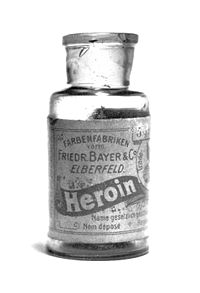
Definition
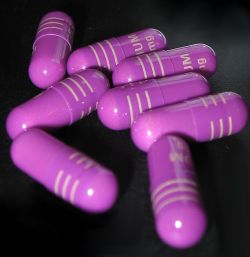
(esomeprazole magnesium)
The term drug is thought to originate from the fourteenth century Old French "drogue" ("supply, stock, provision") possibly deriving from the Middle Dutch or Middle Low German word "droge-vate" ("dry barrels") or "droge waere" ("dry wares"), referring to medicinal plants preserved in barrels or that medicines mainly consisted of dried herbs.[1]
The World Health Organization notes that drug is a "term of varied usage," and that:[2]
-
- (1) "in medicine, it refers to any substance with the potential to prevent or cure disease or enhance physical or mental welfare";
- (2) "in pharmacology to any chemical agent that alters the biochemical physiological processes of tissues or organisms"; and
- (3) "in common usage, the term often refers specifically to psychoactive drugs, and often, even more specifically, to illicit drugs, of which there is non-medical use in addition to any medical use."
Some governments define the term drug by law. In the United States, the Federal Food, Drug, and Cosmetic Act definition of "drug" includes:[3]
-
- (A) articles recognized in the official United States Pharmacopoeia, official Homoeopathic Pharmacopoeia of the United States, or official National Formulary, or any supplement to any of them; and
- (B) articles intended for use in the diagnosis, cure, mitigation, treatment, or prevention of disease in man or other animals; and
- (C) articles (other than food) intended to affect the structure or any function of the body of man or other animals; and
- (D) articles intended for use as a component of any article specified in clause (A), (B), or (C).
Consistent with that definition, the U.S. separately defines narcotic drugs and controlled substances, which may include non-drugs, and explicitly excludes tobacco and alcoholic beverages.[4]
Drugs are usually distinguished from endogenous biochemicals by being introduced from outside the organism. For example, insulin is a hormone that is synthesized in the body; it is called a hormone when it is synthesized by the pancreas inside the body, but if it is introduced into the body from outside, it is called a drug.
Many natural substances, such as beers, wines, and psychoactive mushrooms, blur the line between food and recreational drugs, as when ingested they also can have nutritive value.
Types of drugs
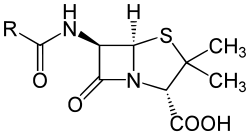
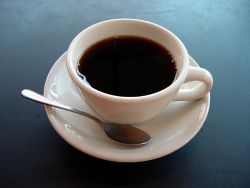
There are numerous ways in which drugs are grouped. The following are a few of the common groupings;
- Nonsteroidal anti-inflammatory drugs (NSAIDs or NAIDs). Family of medications, including aspirin and ibuprofen, that have analgesic and antipyretic effects, as well as anti-inflammatory effects in higher doses, and which a non-narcotic and nonsteroidal.
- Analgesics. Any member of the group of drugs used to relieve pain.
- Antipyretics. Drugs or herbs that reduce fever.
- Anesthetics. Drugs that cause anesthesia: reversible loss of sensation.
- Antiviral drugs. Those that combat illnesses caused by viruses.
- Antibiotics or antibacterial. Those chemicals that kill or prevent the growth of bacteria; antibiotics, however, has come to be used for a broader range of drugs that includes antifungal impacts on yeasts and molds..
- Antimicrobrial drugs. Those, such as penicillin, that kill or prevent the growth of microorganisms such as bacteria, fungi, or protozoans.
- Antiseptic drugs. Those that kill or prevent the growth of microorganisms in the oral cavity.
- Over-the-counter drugs. Those medicines that may be sold directly to a consumer without a prescription from a healthcare professional.
- Prescription drugs. Those medicines that may be sold only to consumers possessing a valid prescription.
- Psychoactive drugs or psychotropics. Chemical substances that cross the blood–brain barrier and acts primarily upon the central nervous system where it affects brain function, resulting in changes in perception, mood, consciousness, cognition, and behavior.
- Recreational drugs. A type of drug, usually psychoactive, that is used with the intention of creating or enhancing recreational experience.
Uses of drugs
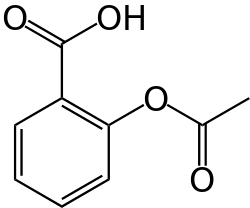
Medical
A medicine or medication is a drug taken to cure, treat, mitigate, or diagnosis an illness or medical condition, or may be used as preventive medicine that has future benefits but does not treat any existing or pre-existing diseases or symptoms.
Dispensing of medication is often regulated by governments into three categories: over-the-counter (OTC) medications, which are available in pharmacies and supermarkets without special restrictions; behind-the-counter (BTC), which are dispensed by a pharmacist without needing a doctor's prescription; and Prescription only medicines (POM), which must be prescribed by a licensed medical professional, usually a physician.
In the United Kingdom, BTC medicines are called pharmacy medicines which can only be sold in registered pharmacies, by or under the supervision of a pharmacist. These medications are designated by the letter P on the label.[5] The range of medicines available without a prescription varies from country to country.
Spiritual and religious use
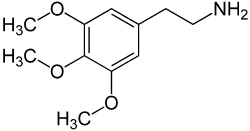
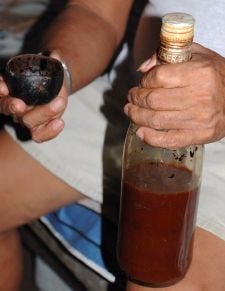
Drugs have been employed for spiritual and religious use since antiquity. Entheogens is the term used for psychoactive substances when they are used for their religious or spiritual effects, whether or not in a formal religious or traditional structure. Entheogens are mostly hallucinogens, being either psychedelics or deliriants, but some are also stimulants and sedatives.
Historically, entheogens were mostly derived from plant sources and have been used in a variety of traditional religious contexts. With the advent of organic chemistry, there now exist many synthetic substances with similar psychoactive properties, many derived from these plants. Examples of traditional entheogens include: kykeon, ambrosia, iboga, soma, peyote, bufotenine, ayahuasca, and Datura. Other traditional entheogens include cannabis, ethanol, ergine, psilocybe mushrooms, and opium. Many pure active compounds with psychoactive properties have been isolated from organisms and chemically synthesized, including mescaline, psilocin/psilocybin, DMT, salvinorin A, ibogaine, and scopolamine. Semi-synthetic (e.g. LSD derived from LSA) and synthetic substances (e.g. DPT used by the Temple of the True Inner Light and 2C-B used by the Sangoma) have also been developed. Entheogens may be compounded through the work of a shaman or apothecary in a tea, admixture, or potion like ayahuasca or bhang.
Self improvement
Nootropics, also commonly referred to as "smart drugs," are drugs that are claimed to improve human cognitive abilities. Nootropics are used to improve memory, concentration, thought, mood, learning, and many other things. Some nootropics are now beginning to be used to treat certain diseases such as attention-deficit hyperactivity disorder, Parkinson's disease, and Alzheimer's disease. They are also commonly used to regain brain function lost during aging. Racetems (eg. Piracetam, Oxiracetem, levetiracetam ) are considered to be a class of nootropics.
Similarly, drugs such as anabolic steroids improve human physical capabilities and are sometimes used (legally or not) for this purpose, often by professional athletes.
Stimulants are often seen as smart drugs, but may be more accurately termed productivity enhancers. Some stimulants can enhance cognition and memory in some people, but cause psychosis in others. They generally have a very substantial side-effect profile and are not considered classical "nootropic" drugs. These typically improve concentration and a few areas of cognitive performance, but only while the drug is still in the blood.
Recreational drug use
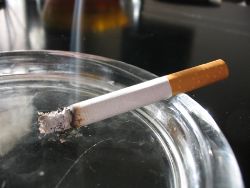
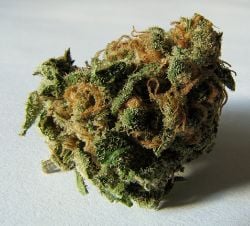
Recreational drug use is the use of a drug, usually psychoactive, with the intention of creating or enhancing recreational experience. Such use is controversial, however, often being considered to be also drug abuse, and it is often illegal. Also, it may overlap with other uses, such as medicinal (including self medication), performance enhancement, and entheogenic (spiritual).
Drugs commonly considered capable of recreational use include alcohol, tobacco, and drugs within the scope of the United Nations Single Convention on Narcotic Drugs and Convention on Psychotropic Substances. The fact that caffeine use may be considered recreational is often overlooked.
The drugs most popular for recreational use worldwide are:
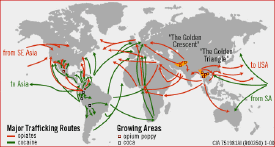
- caffeine (from coffee, tea, and other plant sources): Legal in all parts of the world.
- cannabis (commonly known as marijuana; contains cannabinoids, primarily tetrahydrocannabinol (THC)): Illegal in most parts of the world.
- ethanol (commonly referred to as (ethyl) alcohol, produced through fermentation by yeast in alcoholic beverages such as wine and beer): Legal but regulated in most parts of the world, and illegal in several countries.
- tobacco (contains nicotine and beta-carboline alkaloids): Legal but regulated in most parts of the world.
- opiates and opioids: Generally legal by prescription only, for relief of pain. These drugs include hydrocodone, oxycodone, morphine, and others; some opiates are illegal in some countries but used for medical purposes in others, such as diacetylmorphine (heroin).
- cocaine (A stimulant derived from the coca plant): illegal in most parts of the world, but derivatives such as lidocaine and novocaine are used in medicine and dentistry for local anesthesia.
Drug abuse
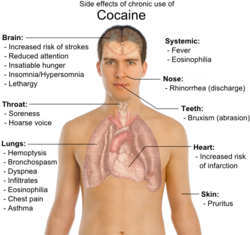
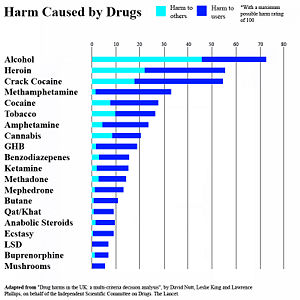
Drug abuse or substance abuse refers to a maladaptive pattern of use of a substance that is not considered dependent. The term "drug abuse" does not exclude dependency, but is otherwise used in a similar manner in nonmedical contexts. The terms have a huge range of definitions related to taking a psychoactive drug or performance enhancing drug for a non-therapeutic or non-medical effect. All of these definitions imply a negative judgment of the drug use in question. Some of the drugs most often associated with this term include alcohol, amphetamines, barbiturates, benzodiazepines (particularly temazepam, nimetazepam, and flunitrazepam), cocaine, methaqualone, and opioids. Use of these drugs may lead to criminal penalty in addition to possible physical, social, and psychological harm, both strongly depending on local jurisdiction.[6]
Definitions of drug abuse general fall into four main categories: public health definitions, mass communication and vernacular usage, medical definitions, and political and criminal justice definitions.
Administering drugs
Drugs, both medicinal and recreational, can be administered in a number of ways. Many drugs can be administered in a variety of ways rather than just one.
- Inhaled, (breathed into the lungs), as an aerosol or dry powder. (This includes smoking a substance)
- Injected as a solution, suspension, or emulsion either: intramuscular, intravenous, intraperitoneal, intraosseous.
- Insufflation, or snorted into the nose.
- Orally, as a liquid or solid, that is absorbed through the intestines.
- Rectally as a suppository, that is absorbed by the rectum or colon.
- Sublingually, diffusing into the blood through tissues under the tongue.
- Topically, usually as a cream or ointment. A drug administered in this manner may be given to act locally or systemically.
- Vaginally as a suppository, primarily to treat vaginal infections.
Notes
- ↑ Douglas Harper, "drug," Online Etymology Dictionary. Retrieved June 11, 2019.
- ↑ World Health Organization, Lexicon of Alcohol and Drug Terms (World Health Organization, 1994, ISBN 978-9241544689).
- ↑ U.S. Food and Drug Administration, Federal Food, Drug, and Cosmetic Act (FD&C Act): SEC. 201. Title 21 §321. Definitions; generally. Retrieved June 11, 2019.
- ↑ 21 U.S. Code § 802. Definitions Legal Information Institute. Retrieved June 11, 2019.
- ↑ Medicines and Healthcare Products Regulatory Agency (MHRA), Classifications of medicines Medicines: reclassify your product, January 22, 2019. Retrieved June 11, 2019.
- ↑ Mosby, Mosby's Medical, Nursing, & Allied Health Dictionary (St. Louis, MO: Mosby, 2002, ISBN 978-0323014304).
References
ISBN links support NWE through referral fees
- Mosby. Mosby's Medical, Nursing & Allied Health Dictionary. Mosby, 2001. ISBN 978-0323014304
- World Health Organization. Lexicon of Alcohol and Drug Terms. World Health Organization, 1994. ISBN 978-9241544689
External links
All links retrieved June 11, 2019.
- DrugBank, a database of over 12,000 drugs.
- Guide to Low Cost or Free Drug Rehab Options
Credits
New World Encyclopedia writers and editors rewrote and completed the Wikipedia article in accordance with New World Encyclopedia standards. This article abides by terms of the Creative Commons CC-by-sa 3.0 License (CC-by-sa), which may be used and disseminated with proper attribution. Credit is due under the terms of this license that can reference both the New World Encyclopedia contributors and the selfless volunteer contributors of the Wikimedia Foundation. To cite this article click here for a list of acceptable citing formats.The history of earlier contributions by wikipedians is accessible to researchers here:
- Drug history
- Entheogen history
- Nootropic history
- Recreational_drug_use history
- Substance_abuse history
The history of this article since it was imported to New World Encyclopedia:
- History of "Drug"
Note: Some restrictions may apply to use of individual images which are separately licensed.
↧ Download as ZWI file | Last modified: 02/04/2023 05:41:11 | 195 views
☰ Source: https://www.newworldencyclopedia.org/entry/Pharmaceutical_drug | License: CC BY-SA 3.0
 ZWI signed:
ZWI signed: KSF
KSF